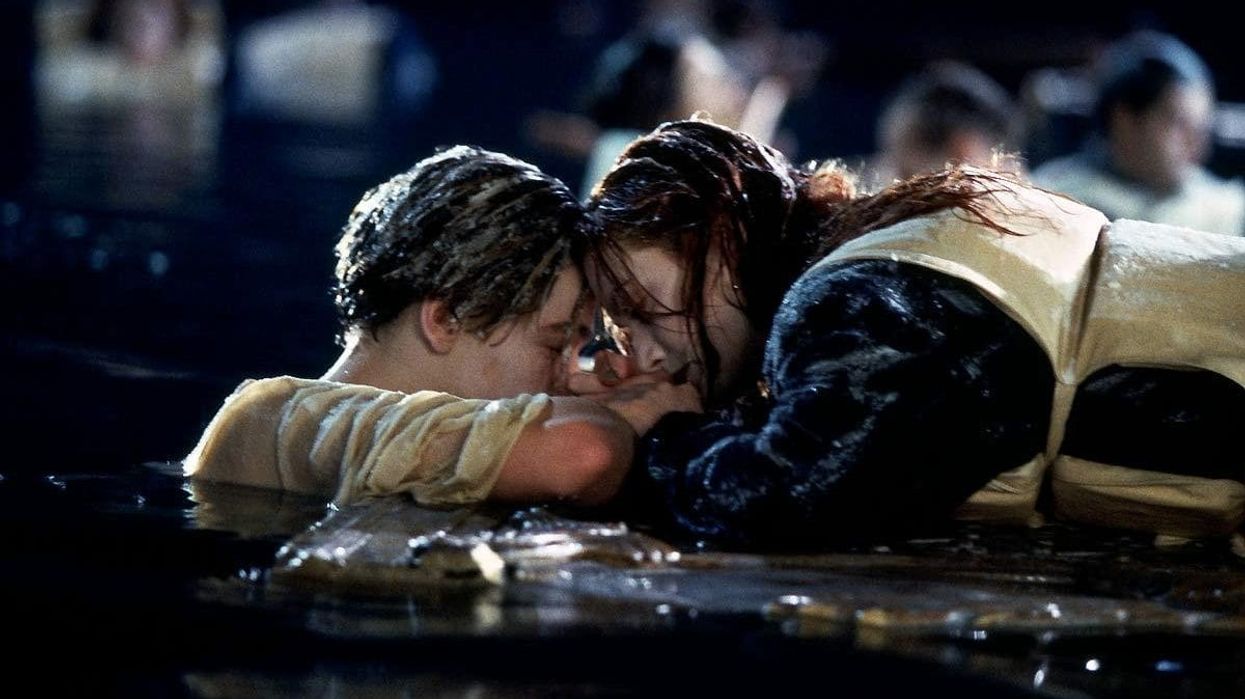Is Titantic the Perfect Quarantine Movie?
Remember when the only pandemic we had to worry about was Leomania?

Okay, a bad joke, sure. But there's something about this nationwide quarantine that's throwing a lot of us into nostalgia mode, and many of us are turning to disaster films. My Twitter feed has been full of film geeks watching Contagion or 28 Days Later. A few nights ago, my husband and I threw on Armageddon. (I gotta say—that movie is not as good as I remember it. Fun, but a bit jingoistic for my tastes. Also, why is Michael Bay's version of Middle America stuck in the 1950s? Every child is in overalls. Why?)
Perhaps the very real prospect of having no new movies both big and small for a long time is making us look backward and seek escape, even into the worlds of 12 Monkeys or Pandemic.
So today, when a fellow NFS writer sent me the link to an old BuzzFeed News article about the making of Titanic, I immediately thought, "Oh, man, I should watch Titanic."
You probably also now want to watch Titanic, but stay with me a second.
If you've been living under a rock and don't know James Cameron's 1997 masterpiece, Titanic is set on the luxury liner that infamously sank on April 15, 1912, and follows two young lovers, wealthy aristocrat Rose (Kate Winslet) and poor artist Jack (Leonardo DiCaprio), whose love crosses class lines despite the protests of those around them.
Sarah Marshall's BuzzFeed piece has some great tidbits about the making of the movie, which was wildly over budget (it cost $200 million, the most spent on a film at the time).As she points out, at the end of production, the film cost slightly more than $1 million per minute of screentime. Insane!
Studio execs thought it would bomb, big time. Why was Cameron, an action director, making a romance that even he called a "chick flick"? And why was this one so exceptionally long, at 3 hours and 14 minutes?

The film was in production for 7 months in Mexico, where Cameron's crew constructed a 17-million-gallon water tank. Two-thirds of the shoot took place at night. Actors slogged through freezing water, and after getting takes in flooded sets, they had to be dried out and redressed for another shot the next day.
Cameron pushed everyone for perfection. Marshall writes of the props, "Every possible detail, from the davits used to lower the lifeboats to the carpet in the first-class dining saloon (recreated, all 18,000 square feet of it, by the same company that had manufactured the original), was identical to what Titanic’s passengers would have seen. When the furniture being artificially aged for a scene recreating the wreck didn’t look quite right to Cameron, he spent a day and a half working on the props himself."
The film got so behind that its summer release was bumped to December. Cameron sequestered himself for months to edit the movie at home.
When Titanic was finally released, it was a smash hit, the first film to ever earn $1 billion. It spent 15 weeks at the top of the box office and went on to win 11 Oscars. People kept going back to watch the movie again and again, with theaters providing showtimes as early as 8 a.m.
And here we are, still talking about Titanic.

In the early scenes, as the divers explore the shipwreck, their lights fall on abandoned spectacles and the remains of a child's doll—and you think, people were lost here. And that's just in the first few minutes!
Titanic might be the perfect quarantine film not only because it entertains and has a great love story, but because it also reflects humanity in a stunningly timely way. Here is a story about people believing themselves infallible. This ship will never sink. We are invincible. Nothing bad can happen to us. (Sound familiar?)
We, the viewers, know that something horrible is headed for these characters. Of course they hit the iceberg. Nothing can stop it. And suddenly, everyone on the ship is in the same terrifying predicament, regardless of class or background.
Sure, you see some greedy opportunists, like Caledon Hockley (Billy Zane, and yes that is his character's name), try to save themselves first and harm others. You see the oppression of the poor.
But you also see moments of selflessness and beauty and compassion. Passengers risk death to save each other. Musicians play in the face of rising water. People love each other when it matters most.
This could have easily been just a big, flashy movie about a ship killing a lot of people. Audiences love that, clearly. But what elevates Titanic is that its plot is grounded in the characters' experiences and the emotion of their circumstances.
Remember the scene where the liner is about to go under for good, and Rose and Jack are hanging onto the railing? Rose makes eye contact with multiple people around her. They're all obviously afraid. There's no dialogue, but there doesn't need to be. It's just an instant of, I see you, and we're going through this together. Maybe you'll have a similar moment in your social distancing today.

You can't really say at the end of Titanic that everything turns out all right. I mean, the ship does sink, and there were definitely not enough lifeboats. But at least Cameron does help us see that moments of human connection are meaningful, and they are one thing that can help us get through a crisis.
So stay home, turn on Titanic, and tell someone you love them today.

 'Anora'Neon
'Anora'Neon Annie Johnson Kevin Scanlon
Annie Johnson Kevin Scanlon









